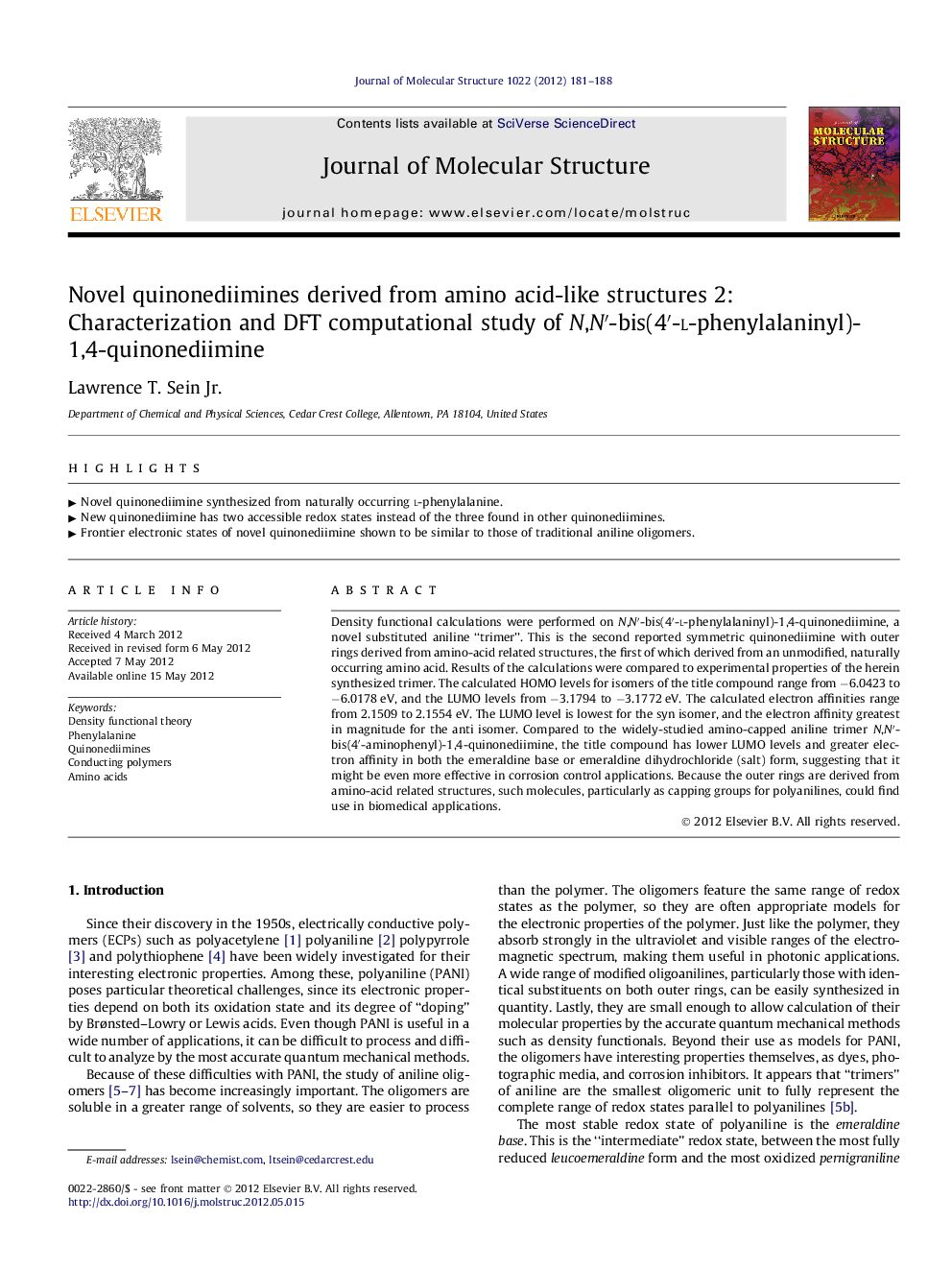| Article ID | Journal | Published Year | Pages | File Type |
|---|---|---|---|---|
| 1409547 | Journal of Molecular Structure | 2012 | 8 Pages |
Density functional calculations were performed on N,N′-bis(4′-l-phenylalaninyl)-1,4-quinonediimine, a novel substituted aniline “trimer.” This is the second reported symmetric quinonediimine with outer rings derived from amino-acid related structures, the first of which derived from an unmodified, naturally occurring amino acid. Results of the calculations were compared to experimental properties of the herein synthesized trimer. The calculated HOMO levels for isomers of the title compound range from −6.0423 to −6.0178 eV, and the LUMO levels from −3.1794 to −3.1772 eV. The calculated electron affinities range from 2.1509 to 2.1554 eV. The LUMO level is lowest for the syn isomer, and the electron affinity greatest in magnitude for the anti isomer. Compared to the widely-studied amino-capped aniline trimer N,N′-bis(4′-aminophenyl)-1,4-quinonediimine, the title compound has lower LUMO levels and greater electron affinity in both the emeraldine base or emeraldine dihydrochloride (salt) form, suggesting that it might be even more effective in corrosion control applications. Because the outer rings are derived from amino-acid related structures, such molecules, particularly as capping groups for polyanilines, could find use in biomedical applications.
► Novel quinonediimine synthesized from naturally occurring l-phenylalanine. ► New quinonediimine has two accessible redox states instead of the three found in other quinonediimines. ► Frontier electronic states of novel quinonediimine shown to be similar to those of traditional aniline oligomers.
